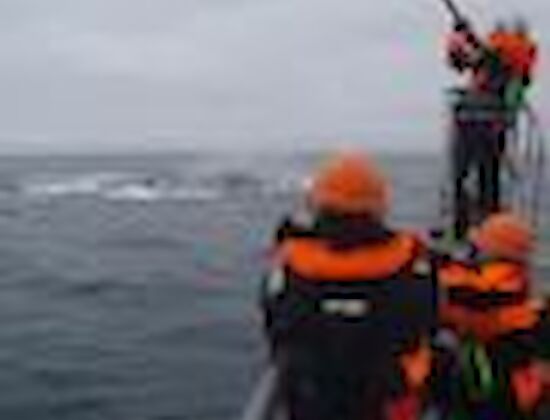The last hurrah
After 38 days of intensive work in the Southern Ocean – what a brilliant finale! All the stars aligned for our last day in the sampling area with calm weather, an abundance of approachable whales, many photo identifications and biopsies, and a wonderful sense of camaraderie on board.
It was about mid morning when we sighted the blow of a whale which the acousticians had been guiding us towards for several hours. But it wasn’t just one of these magnificent creatures; it was a pod of six Antarctic blue whales cavorting in the sun. We approached slowly so we had time to study their behaviour while they remained undisturbed. After identifying the individual whales with photos and biopsies from the ship's bow, the team set out in the small boat Remora.
Remora coxswain, Mick Davidson, said approaching the whales in the small boat 'was like sitting in a mini-minor with six huge trucks bearing down on you at full speed.' He noted that the largest whale was an estimated 25 metres in length – that’s one massive truck!
The first mate of the Explorer, said the whales voyage has been a real adventure. 'Trying to anticipate the whales next full-speed move really gets the blood pumping. Seeing the white water appear as a whale breaks the surface offers similar thrills to deep sea fishing.'
By the end of the day, the small boat team had achieved another huge milestone – our second satellite tag attached to one of the whales. This will hopefully allow us to continuously track their movement as they head north for the winter. We named the tagged whale Henry, in honour of the first birthday of the baby of our colleague Sarah, a pioneer of many voyages to develop non-lethal methods to study whales.



